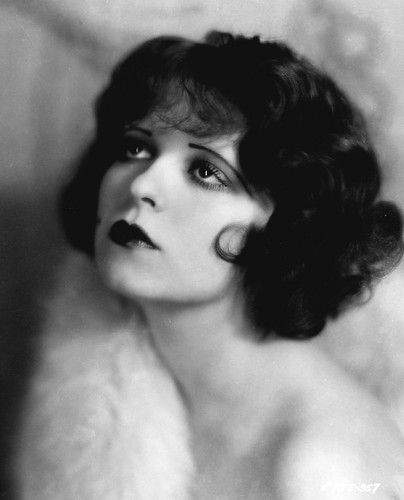
With all the chatter about the overuse of Photoshop in the fashion and glamor industry, it makes you wonder - have women been being tricked into chasing after the beauty standards of Hollywood for an entire century, beauty standards that don't even exist? In the 1930's, you can imagine how little the public knew about the retouching of the photographs they saw. At least today, we have the internet to show us the before and after versions. So how did they do it before computers and digital programs to remove wrinkles and bad shadows? It was all done manually, in the darkroom, on the actual film or while transferring the image from the negative. It was common for photo artists to add in the touches with fine brushes and special inks and paints.
Most of the facial smoothing in the Joan Crawford picture was achieved through dodging and burning - the process of allowing more or less light to certain areas of the image while the negative is being projected to the photo paper. This allows some of the hard facial lines and shadows to be lightened up. It's a very time consuming and difficult task, taking hours in the darkroom to perfect one photograph. You will notice in present day Photoshop, there is dodge and burn tool named after this antiquated, manual technique.








2 Comments:
I was just looking at the library today, and I looked at a book of George Hurrell photos (where this image of Joan Crawford appeared). He shot mostly on 8x10-inch negatives. They were retouched by hand, yes, but with a pencil. Graphite pencils were used to darken parts of the negative, and when those negs were enlarged and printed, into positives, on paper, the dark areas look light. The retoucher added highlights to make flaws disappear.
For publicity stills like this, the negative was used to make a set of prints. Those prints were then distributed worldwide to run in print media. There was a voracious appetite for new pictures all the time.
Hurrell was a bigshot Hollywood photographer. He started in the old orthochromatic film era, where colors were seen unevenly by the black-and-white film, resulting in fake-looking saturation. He did switch to panchromatic film, then started using lenses that gave sharp results rather then prettily blurred. This made him totally anti-foundation(see Crawford with absolutely no foundation, just eyes and lips?). Finally, Hurrell also used different kinds of enlargers (diffusion versus condenser, I believe) to achieve the right level of softness. I'm not even going to get into his use of light - but he was certainly an artist with it.
Anyway, just wanted to let you know it wasn't the prints that were heavily retouched, but the negs. Prints are retouched (with ink) but mostly for dust specks. There are of course darkroom shenanigans but I think Hurrell relied on perfect studio lighting and heavy pencil retouching of the negs.
All most is very good. There are topics to be learned in this post. I will get a lot of work. Thanks for share.
Post a Comment